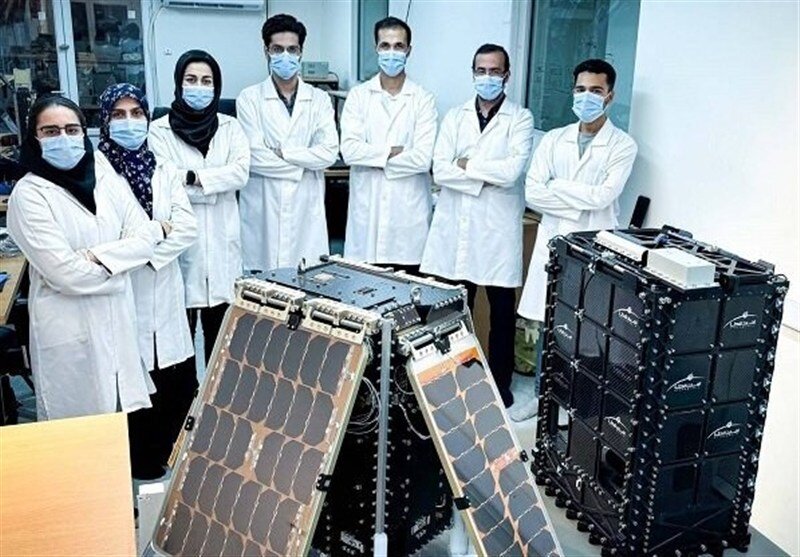Chief scientist offers insights on Kowsar and Hodhod satellite launches

TEHRAN – The company developing the Iranian Kowsar and Hodhod satellites has offered a detailed account of the technical achievements following their launch into the Earth’s orbit and their successful passing of different tests.
The knowledge-based Omid-e-Faza company chaired by Hossein Shahrabi has, in recent years, served as one of the active entities involved in the development of operational satellites.
The launch, a year ago, of the two satellites was a watershed in the process of satellite construction by the private sector.
“The development of the Kowsar satellites began in 2019 and that of Hodhod got underway two years later,” said Shahrabi in an interview with Tasnim News Agency.
“The two satellites had been designed differently in from a technical perspective. One of them had been designed to conduct missions based on the Internet of Things (IoT) and the other one for remote-sensing operations,” he noted.
He added local experts were taking everything into consideration to make sure the pair would experience a successful launch, which finally happened.
He said the performance of the Hodhod satellite was announced as “technically complete,” and as technical experts have confirmed, the satellite is operating according the plan and all of its systems are working as expected.
He then referred to some problems involved in the operation of the Kowsar satellite, adding, “despite all these issues, the Kowsar satellite is currently in orbit, continuing its mission. Of course, note that at this stage, only at certain times can we see the satellite and its direct links with the earth are possible only at certain intervals,” he explained.
Last year, the Kowsar and Hodhod satellites were successfully launched into orbit and the first signals were received from both. The launch occurred at 2:48 AM on Tuesday, November 15, 2024, utilizing the Soyuz rocket from Russia's Vostochny spaceport. On Wednesday, the Iranian Space Agency confirmed that both satellites were successfully deployed into orbit and had begun transmitting signals back to Earth.
The Kowsar satellite is a high-resolution remote sensing satellite capable of capturing images with a resolution of 3.5 meters per pixel. It is intended for applications in agriculture, natural resource management, environmental monitoring, and precise mapping, aiding in the observation of environmental changes and disaster management.
The expected operational lifespan of the Kowsar satellite is approximately two years, and it incorporates advanced imaging and data transmission technologies.
The Hodhod satellite, on the other hand, is designed for communication purposes, particularly to support the Internet of Things (IoT). It aims to facilitate communication in remote areas with limited terrestrial network access, making it suitable for applications in smart agriculture, transportation, and crisis management.
Professor Parto Alam, a high-ranking senior member of the Kowsar satellite's design and construction team, noted that these satellites weigh 30 kg, have an orbital lifespan of 3.5 years, and operate at an altitude of 500 km. Its mission focuses on agriculture and mapping, and its color range is defined at 15 km.
The successful launch of these satellites into orbit underscores the perseverance and commitment of Iran's scientific community, demonstrating the nation's capacity for ongoing innovation and advancement in the aerospace industry. As Iran's satellite program progresses, the country's role in global space exploration efforts is expected to gain greater visibility in the years ahead. One thing Iranian scientists tend to take pride in is that the country has managed to take huge stride in the space industry despite decades of debilitating Western sanctions.
Leave a Comment